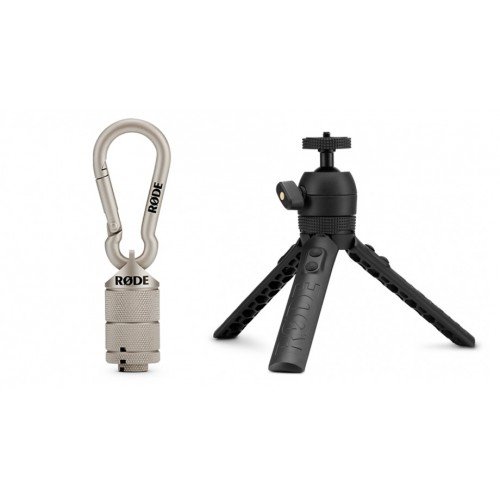First appeared in the Crisis Response Journal 14:4 | October 2019
https://www.crisis-response.com
Anger, confusion, fear, mistrust… Pressure in many forms beating down on you from every direction – time is against you, your board of directors and shareholders may or may not remain with you… Every move you make, every mistake you make, every false step or misspoken word can result in failure or even loss of life… Welcome to leadership during a crisis, says Stephen Grossman
Being capable of successfully running a Fortune 100 company, or controlling a small or medium-sized family business whose stewardship has been handed down over generations, does not automatically qualify or even grant a person the skill, temperament or cognition to manage a crisis. It is a fallacy to think a smart and talented person is gifted at all things. And genuine leaders inherently understand this.
Great leadership is ultimately about being a supremely gifted identifier of talent, evaluator of risk and reward, and a master craftsperson at adeptly deploying resources (human and material), which – when all combined– amalgamate into winning strategies and tactics. Companies fail during a crisis not because the challenges the event presents are insurmountable, or because they are facing the proverbial perfect storm when everything seems to be working against the victim. More often than not, they fail because of the false belief that those who lead the organisation during normally challenging times should inevitably lead it during a crisis.
Crises must be managed specifically, because such events have their own life cycle and nuances. They have their own unique points of origin, a start date as it were, and equally, they must have a point of closure.
Tackling a crisis requires very specific skills, which might include cyber security, physical security, medical, evacuation planning, psychological, environmental, legal, investigative, high stakes negotiations (involving kidnap for ransom, extortion, blackmail, cyber ransom or cyber extortion, corporate espionage and blackmail, etc), humanitarian, engineering, political, knowledge of religions or geography, or of anthropology or government policy – the list is virtually endless.
The top executives or traditional inner circle may not have any of the skills needed to grasp or grapple with the root cause or the developing effects of the crisis and would therefore be found wanting when it comes to designing and deploying an effective response. If the crisis involves a malicious act or intent to cause harm, the targets of that negative action may be the very leaders of the company tasked with dealing with the attack.
Just as lawyers should never represent themselves in court, corporate executives should never lead the management of a crisis in which they are the target. And while surgery should never be conducted by a pastry chef, a cyberattack should never be countered by someone who has trouble syncing their Outlook calendar with their iPhone. And when the crisis is resolved, the crisis mode is finished and the company must return to its established business-as-usual pace and posture.
But this is often easier said than done. The collective brain and body of the team has been pumped for a sustained period of time with a cocktail of adrenaline, cortisol, noradrenaline, oestrogen and testosterone, dopamine and serotonin. These energy-generating, feel-good chemicals are served gratuitously by a hormone mixologist from the exhilarating fight or flight bar, which never closes during crisis mode. This particular cocktail can be addictive. It makes a person feel like a superhero and is certainly more exhilarating than most usual workdays spent sitting behind a desk watching cute cat videos on social media feeds.
Hang up the superhero cape
Hanging up one’s superhero cape can be difficult. But it must be done. Many executives, particularly when they have handled a crisis well and seen or felt the benefits of a job well done, simply refuse to let go of that cape. So crisis mode becomes permanent, and that can be as damaging as the initial threat.
The key to keeping your business running while winning out over your crisis is to form an effective, well trained, well selected ‘tiger team’ or crisis response team, a term I prefer over the more commonly used crisis management team (CMT). The term ‘crisis management’ elicits a sense of keeping up with something, almost reactionary and defensive, and maintaining it, managing it, keeping it running. Crisis should not be handled in this manner.
A crisis should not be managed; it should be overcome. The conflict must be resolved, the escalation must de- escalate, the threat must be mitigated or neutralised (in the truest meaning of the word and not with reference to Hollywood action movie terminology). The tiger team is an ad hoc crisis response unit designed to resolve a specific crisis. It comprises a group of specialists or experts in relevant fields coming together to achieve a specific goal. Consider what was said above about common obstacles in successfully overcoming a crisis and good leadership, then consider the key concepts of a tiger team: A group of specialists working together towards a common goal (against a common but potentially complex challenge). And, once that goal has been achieved, the team is disbanded.
A company can – and should – form tiger teams from throughout the organisation, regardless of job title or position, and sometimes it must bring in experts from outside the organisation. A company should expect to have different teams operating at different times, or even simultaneously, while achieving various goals or tackling different crises. The team should report to designated executives or to a board of directors.
Team members can be anyone, provided they possess the following skills or qualities:
- Expertise or skill in an aspect relevant to the specific crisis;
- Cognitive skills most likely to enhance the team’s ability to work through the problem;
- Behaviour befitting a team operating in extreme circumstances (team cohesion is critical);
- Ability to carry out the responsibilities of the tiger team while continuing their everyday job role, or have a viable temporary replacement while serving in the tiger team
- Discretion;
High threshold for stress; - Open-mindedness and a willingness to
- consider best options, even if the idea is
- not generated by herself/himself;
- Strong communication skills – is able to
- frame an argument, ask smart questions,
- challenge, constructively disagree, etc; and
- Thick skin – tiger teams must be focused on the goal, not the feelings of its team members. This is not to say the feelings of the team are irrelevant (if a person is not in an optimal state of mind, they don’t perform effectively and cannot focus on anything other than themselves), but the goal is greater than any one individual in the team. This is not the same focus or balance as when an organisation is operating in everyday mode, it is particular to crisis mode
To avoid the after-event headache where one laments not knowing ‘something like that could happen to me’, or to an organisation like yours, it is wise to assess your risks. Take into account where you operate and with who you communicate, consider who benefits and who may be affected or offended by what you do. You must assess the effects the nationality of your company’s base of operations may have in various places where you operate or wish to work, and think about your messaging and the messages you have been receiving from inside and outside your organisation – this is part of regular threat intelligence.
You also need to take the time and effort to weigh your cybersecurity vulnerabilities, be sensitive to the effects that the behaviour of key executives inside and outside the office may have on others, and look at how events have affected your competitors or companies similar to yours in other ways.
Essentially, it is worth the time and cost of conducting intelligent, pragmatic, strategic and tactical assessments of your risks. Be sure to include internal and external threats, cyber and physical security vulnerabilities, financial risks, health and safety risks, travel security, natural disasters and climate-related impacts, political exposure, etc. And continue these intelligence reviews and analysis with regular updates and modifications to your threat assessments, response stance and response readiness.
There are various risk experts who can assist.
Be sure, though, that the consultants you choose have subject matter expertise. And it is worth bearing in mind that sometimes the best expert is not the one who fights crime and faces disasters, but the person who has actually carried out a crime or caused upheaval at some point in their lives. Taking the backgrounds of such expertise into account, it is best to have your trusted risk consultants select and manage these experts with the unique insider view of certain threats. There are hackers who have turned from the dark side to help companies protect themselves and some formerly radicalised individuals are now working to de-radicalise others. These people can provide great insights into worlds one would otherwise never fully understand.
Equally important to a good response capability is to know your resources. You would be well served to conduct profiling exercises to know the types of people and skills you should have in various predesignated scenario- based tiger team set-ups. Identify what type of team composition is best for which kind of event (mapped out in risk assessments mentioned above) and then figure out who would be best suited for which teams. This requires
a matrix of skills assessment and behavioural based profiling to identify who has the right skills and which skilled person has the right personality, cognition, acuity, communicativeness, stress management and so forth to contribute most to the team or teams (a person could possibly contribute to more than one deployed tiger team).
Anarchistic pixies
Leaders know they will face crises, regardless of the size of their organisation. The world today, with all its connectivity and ability to operate with relative anonymity with global reach and lightning speed, presents rich targets for organised crime groups, individual criminals, state actors, antisocial types or for anarchistic pixies to attack. Prevention is great. But prevention is nothing without preparedness
and the ability to effectively respond to a threat.
The key to building and maintaining this threat response capability is to reach out to the expertise in your organisation and pull in talent from the greater business community, to engage strategically those who will be most effective in a team dealing with certain threats or crises. Train those team members. Educate the rest of the company on how to respond during a crisis. And, during an actual event, it is as essential to communicate internally as it is externally– inform in a smart way what is happening and what is being done about it, and provide timely, well- considered and honest assessments of the impact.
Explain to your stakeholders what you are doing (without giving away operational secrets or providing the source of the threat more ammunition) and demonstrate with actions, and not only with words, the seriousness with which your organisation executes its duty of care to its employees, customers, partners and community.
Author
STEPHEN GROSSMAN is a crisis and critical event response consultant, specialising in reputation management and tackling cases involving extortion, blackmail, fraud, intractable disputes, malicious litigation, and threats to life. He has over 25 years’ experience managing business intelligence and investigations. Grossman is a subject matter expert in investigative interviewing, behavioural profiling and deception detection. He is frequently asked to carry out complex alternative dispute resolutions and high stakes negotiations for both private and public sector clients
join the CRJ LinkedIn group follow us on twitter @editorialcrj
Crisis Response Journal 14:4 | October 2019 49






















